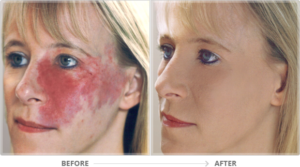What Is Micropigmentation?
Paramedical micropigmentation is a series of semi-permanent makeup procedures. The goal of micropigmentation is to break up the scar tissue, improving its texture while also matching the colour of the affected area to its natural skin tone. In cases where the area has no discolouration, this technique can be performed without pigment to smooth out the skin texture.
We only use the highest quality mineral-based pigments to give you safe, effective results.
Micropigmentation involves implanting small particles of natural pigment under the skin to bring about an aesthetic tattoo. The procedure is sometimes termed as permanent cosmetics.
Benefits
Micropigmentation can:
- Help blend the color of scar tissue to more closely match that of surrounding skin.
- Break up the scar’s tough texture, softening and flattening it.
What to expect after the procedure
- Swelling in the treated area, which can be treated with ice packs and ointments.
- Improved appearance in the treated area within a few days.
- Full healing of the treated area in four to six weeks.
- Follow-up treatment may be necessary in some cases.
Preparing for the procedure
It’s important to remember that micropigmentation skill levels vary widely. It’s important to find a qualified ASDS dermatologist. Patients should ask for references. Before the procedure, an ASDS dermatologist will usually review the patient’s medical history and conduct a physical exam. This is the time for the doctor and patient to discuss expectations, potential risks and outcomes of the procedure.
Topical anesthetics are sometimes applied to keep the patient comfortable during the procedure.Micropigmentation for Scars
Possible risks
As with any treatment, there are risks associated with it, though they are minimized in the hands of a qualified ASDS dermatologist. These include:Micropigmentation for Scars
- Infection
- Removal problems
- Allergic reactions
- Inflammation
- Keloid formation
- MRI complications

